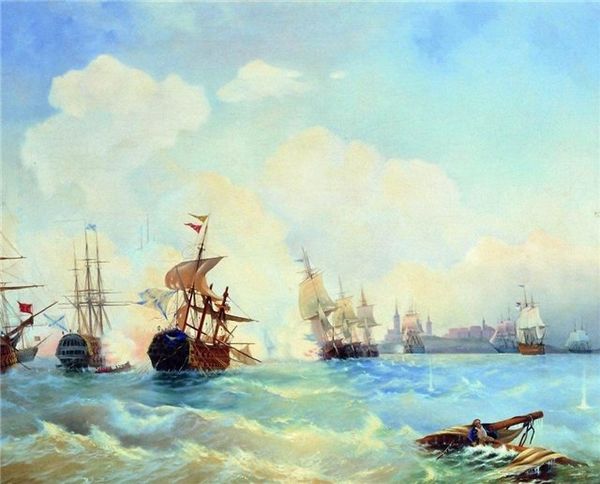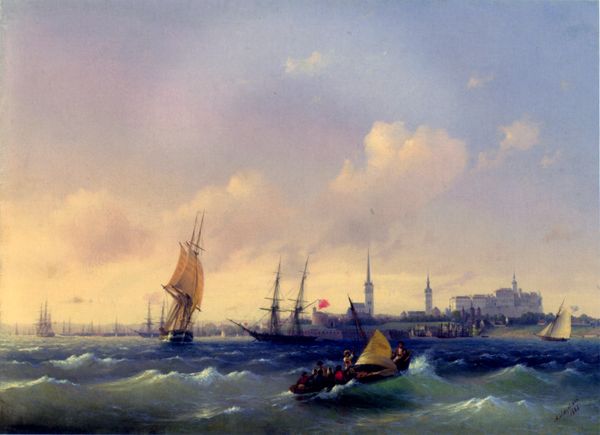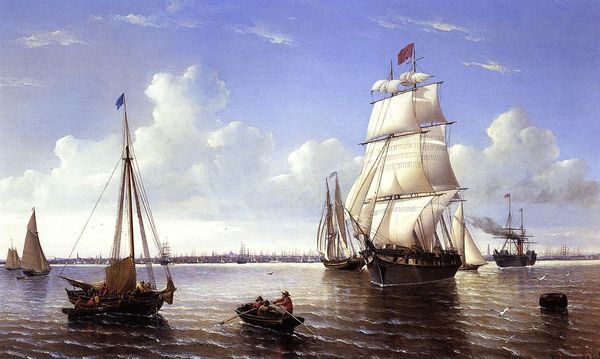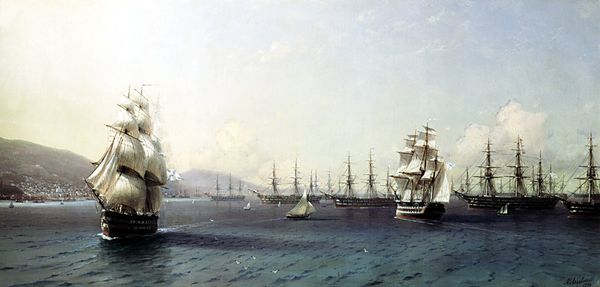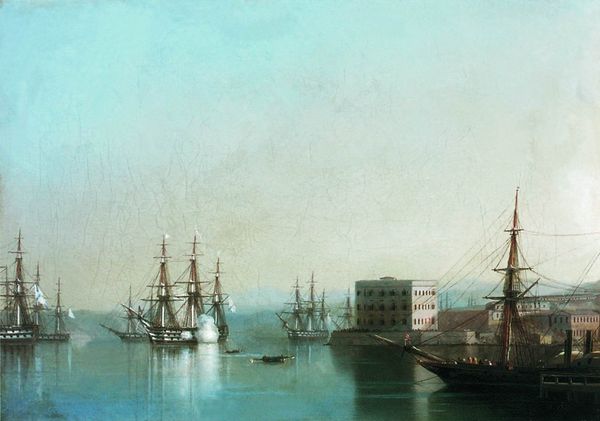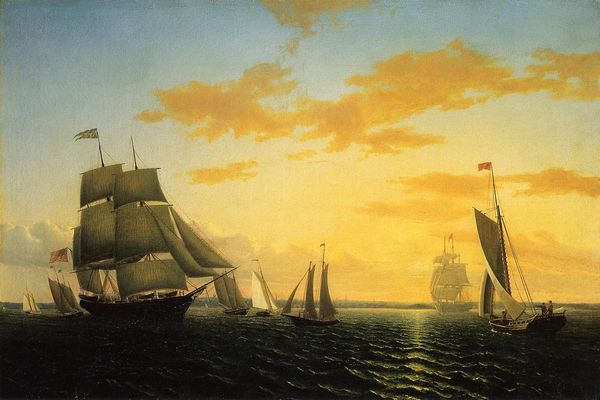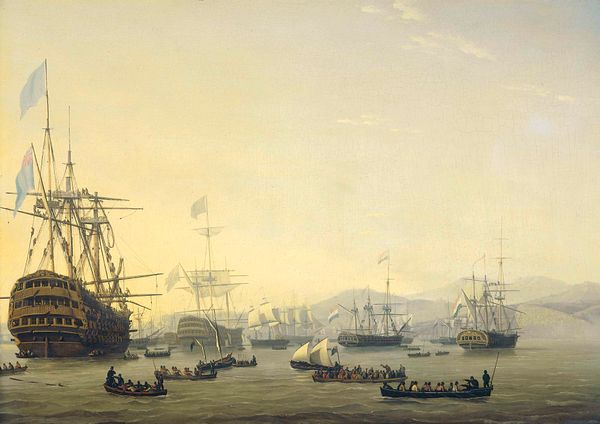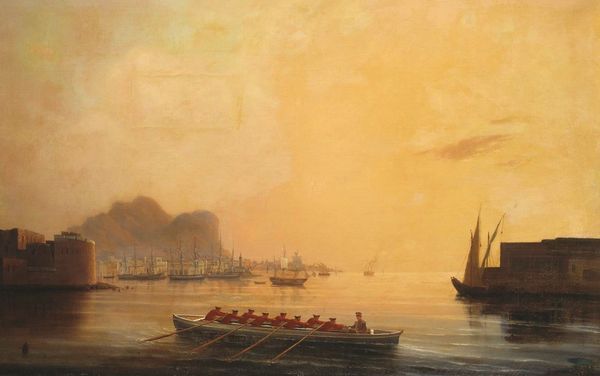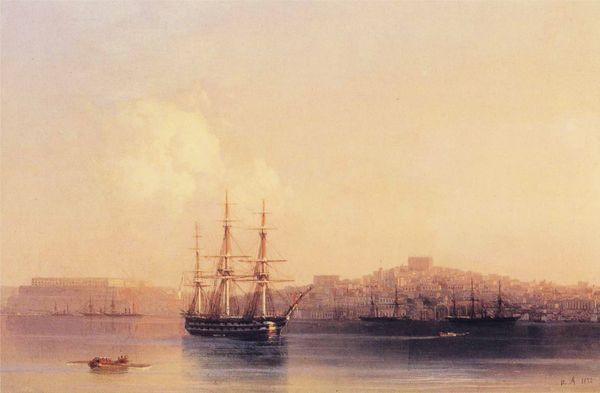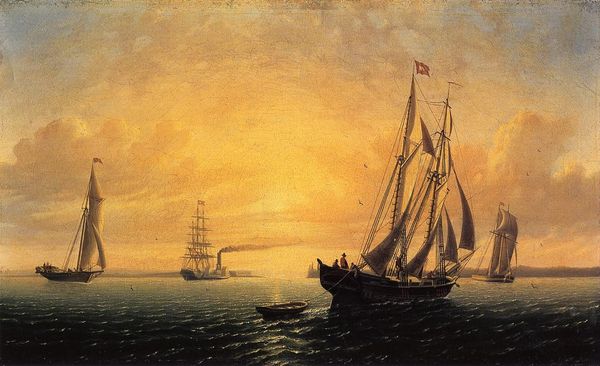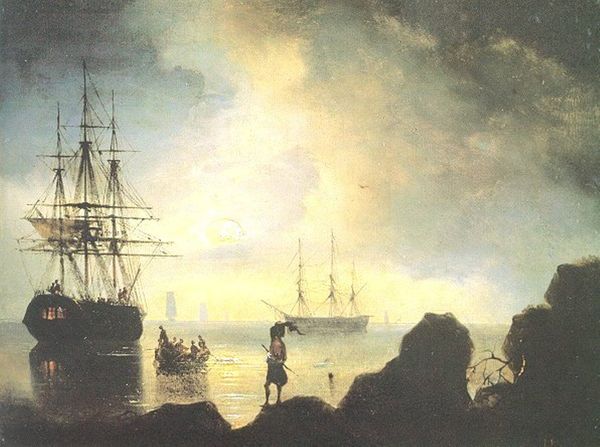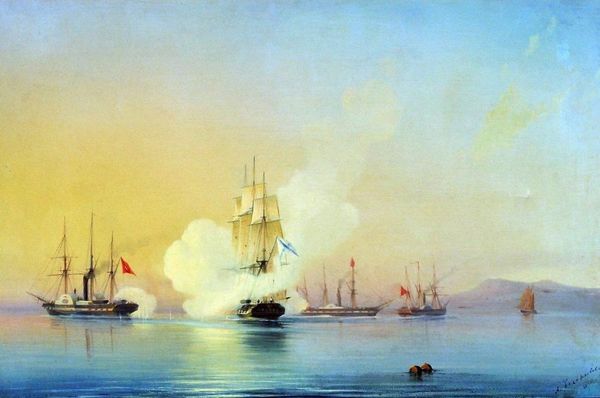
Dimensions: 56 x 81 cm
Copyright: Public domain
Curator: Aivazovsky's 1845 painting, "Dusk on the Golden Horn," depicts a stunning sunset over Istanbul. What captures your attention first? Editor: It’s the sheer luminosity. The hazy golden light infuses the scene with such a calm, almost melancholic, atmosphere. Look at how it shimmers on the water and silhouettes the ships. Curator: Absolutely. The masterful use of light is classic Aivazovsky, but it also served a specific social function. Remember the Romantic era's fascination with exotic locales and empires. He’s presenting a vision of the Ottoman Empire tinged with that aesthetic, produced and consumed by a specific European audience hungry for such images. Editor: That golden hue isn't just aesthetic; it speaks to cultural memory. Gold is associated with wealth, power, divinity, and the idea of a "golden age," all projected onto this view of Constantinople. The numerous boats converging toward the city suggests the city's central position in trade and connection of ideas. Curator: I find the composition particularly revealing. The ships, rendered with clear detail, probably relied on sketches done from observation. But how were those ships built and maintained? What sort of labour was exploited so they would appear in the end on this romantic scene? What goods were traded and what social relations underpinned the economy? Editor: The vessels also evoke a certain freedom, exploration, adventure... think of the "ships of state" metaphors. Curator: But there's a dark side too, ships can mean colonial power. What’s implied here through this scene? Who profited, who suffered? Oil paint itself came to signify a certain level of status both for painter and for consumer. Editor: That's the power of images; they resonate on many levels simultaneously. Looking at the city fading in the distance behind the ships I am reminded that even powerful empires face the setting sun, change and the inevitable passage of time. Curator: Seeing through the surface, identifying both beauty and underlying realities allows us to develop a much broader picture, doesn't it? Editor: Indeed, appreciating those dualities lets us see what resonates across time, as well as how things have fundamentally transformed.
Comments
No comments
Be the first to comment and join the conversation on the ultimate creative platform.
